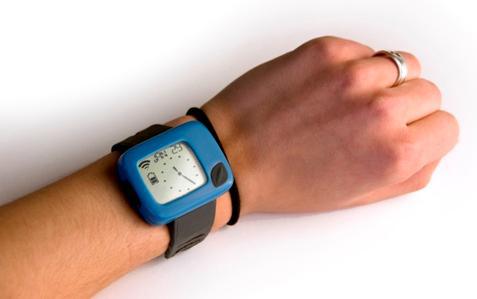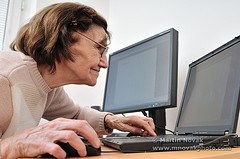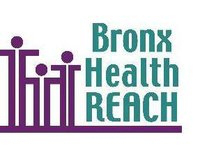“Aging in place” was a term used repeatedly at last week’s American Society on Aging Conference in Washington, DC. Every expert I spoke with offered a slightly different perspective on exactly what that means. However, all agreed that it is today’s technology that allows many more seniors to do so, and for a longer time.
One source describes it as “a concept where seniors continue to live at home or with a family regardless of their mental and physical decline. This concept requires resources like in-home caregivers”. An AARP Survey found that nearly 90 percent of seniors (65+) want to stay in their own homes for as long as possible; 80 percent don’t think they will ever live elsewhere.
 In a previous blog post, I discussed technology ‘s major role in today’s caregiving. Without it, many older people would be forced to move, to access necessary health services. Some of these technology products and services have actually been around for some time as telehealth tools. According to The Health Resources and Services Administration (HRSA) telehealth uses electronic information and telecommunications technologies to support long-distance clinical health care, patient and professional health-related education, public health and health administration. This might encompass technologies from videoconferencing to streaming media to a web portal.
In a previous blog post, I discussed technology ‘s major role in today’s caregiving. Without it, many older people would be forced to move, to access necessary health services. Some of these technology products and services have actually been around for some time as telehealth tools. According to The Health Resources and Services Administration (HRSA) telehealth uses electronic information and telecommunications technologies to support long-distance clinical health care, patient and professional health-related education, public health and health administration. This might encompass technologies from videoconferencing to streaming media to a web portal.
With a nod towards consumers, laptop computers, and families scattered around the country, telehealth still embraces use of electronic information and telecommunications technologies, but it’s now something you and I — just ordinary folks with aging parents — can regularly access and use. Remote home monitoring is just one example of how health technology has evolved into an everyday consumer product.
It’s gone from sending pacemaker data by phone and “virtual” doctor visits to a full-blown, user-friendly motion detector system hooked into a computer and programmed to call or text a loved one in specific situations. Activity can be monitored from afar – software is able to analyze everything from “did mom leave the stove on?” to “did dad take his medication this morning?” It sounds a bit “big brother-ish” but it’s an example of adaptive and innovative technology use to ensure that a senior can remain at home.
Monitoring of chronic conditions and potential for falls— a major source of disability, injury, and death among seniors — also allows aging in place to continue. This is great news for many seniors. Not so great news for many others.
All this technology comes at a price. Set up fees can range from a few hundred to a few thousand dollars, depending on the equipment, needs, scope, and health issues. Then there are monthly subscription fees — one company said their service averaged around $99 per month. Since many seniors are on a fixed income, it probably falls to adult children to shoulder the costs. CMS reimbursement is unlikely for most equipment and services. So what’s a poor family to do?
Low income seniors and families face the same aging in place issues that the middle income and wealthy do. Only the $99 per month is probably not in the budget; nor is the thousand-dollar set up fee. Aging in place technology has been shown to reduce health costs, improve seniors’ mental health, and provide an unquantifiable benefit of peace of mind for adult children. It can also help to spot early warning signs of more serious conditions, like progression of heart disease or Alzheimer’s.
For low-income seniors, many of whom are also homebound, there is no “quick fix” solution. There’s no power button to push, link to click, or data to transmit. This group of seniors age in place without a technology safety net. Yet another schism in digital divide.
"Aging in place" was a term used




 In a
In a 
 Bronx Health REACH Town Hall Meeting: “Make Health Equality a Reality” – April 28th
Bronx Health REACH Town Hall Meeting: “Make Health Equality a Reality” – April 28th